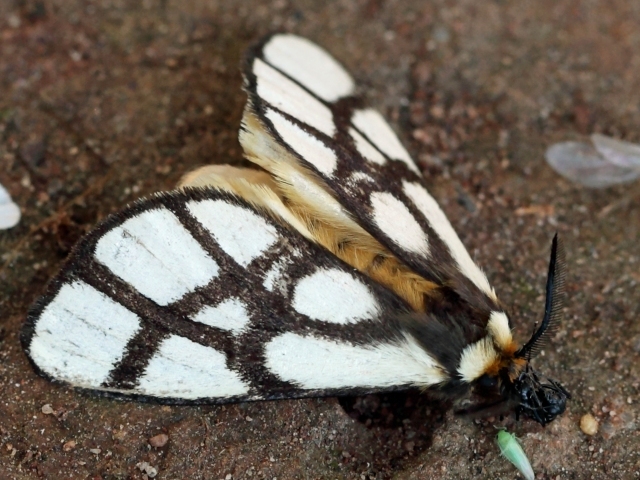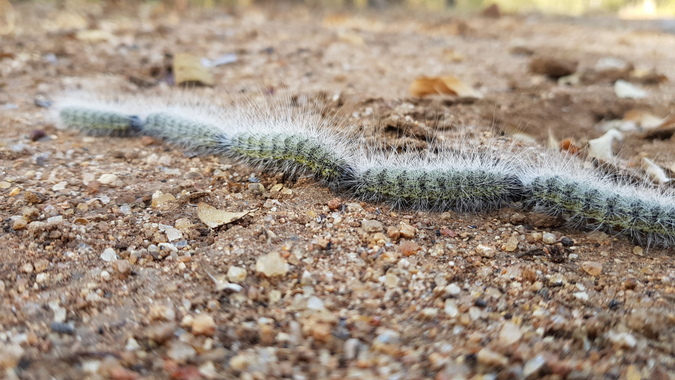
Warning: Do not handle processionary caterpillars as their hairs can cause irritation, burning and itching
The processionary caterpillar is the larval stage of the reticulate bagnest moth (Anaphe reticulata).
The name ‘bagnest’ is derived from the pupating stage of this moth’s life cycle, when the silken cocoons can be seen in a circular conglomeration on trees (‘bag nests’), held together by a silk mesh. Once the moth emerges from the cocoon, it lays eggs on trees and shrubs with palatable leaves.

After hatching from eggs, the caterpillars begin to feed on the leaves of their first host plant. Once having devoured that food source, they trail off in single file to their next meal, nose-to-tail and connected via a silk trail started by the leader. The leader will also make use of pheromones and chemical clues to show the way.
These long lines are most often seen during the colder months of the year. If the line is disrupted, the caterpillars become disoriented and the line will come to a complete stop before a new leader takes control and leads the way.

There are several species of processionary caterpillars in the world, all of them hairy. The hair is a defence mechanism from natural predators such as birds like tits and cuckoos. The caterpillar’s hairs are barbed and are considered dangerously toxic. Coming into contact with the hairs can cause a range of reactions, from mild inflammation and irritation to severe rashes and anaphylactic shock.
When they feel threatened or stressed, the caterpillars can eject their hairs in defence, which then penetrate and irritate all areas of exposed skin, followed by allergic reactions. They are considered particularly toxic for children and animals, such as dogs, who are often inquisitive of these small creatures and get too close to them.
Fortunately, the species in South Africa (including Anaphe reticulata), do not have the same level of toxicity in their hairs as other species (such as the ones found in Europe), and even in large groups, they do not present as a health hazard – although it is always wise to be cautious and not touch them.
Watch a video of the processionary caterpillars doing what they do best – marching in procession bumper to bumper
To comment on this story: Login (or sign up) to our app here - it's a troll-free safe place 🙂.![]()






